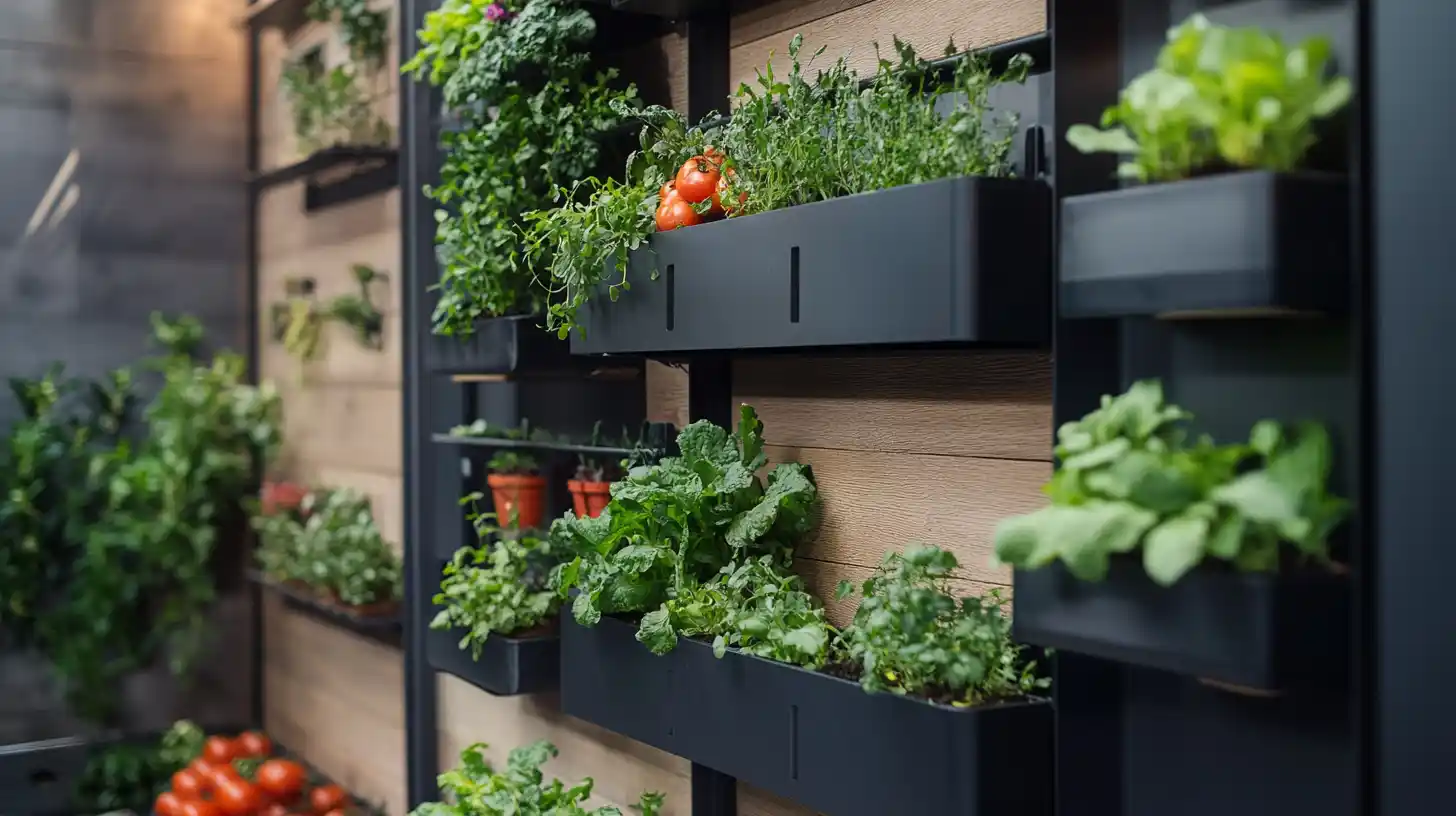Designing a productive garden in a small space might seem tricky, but with the right vegetable garden ideas, even the tiniest plots can become vibrant, edible retreats. Whether you’re working with a balcony, courtyard, or backyard corner, you can create a bountiful harvest by using smart, space-saving techniques. For additional inspiration, check out these backyard vegetable garden ideas that pair beauty with productivity. This article shares ten creative ways to turn your compact area into a lush, thriving vegetable garden—all rooted in nature, beauty, and practicality.
Table of Contents
1. Companion Planting Techniques
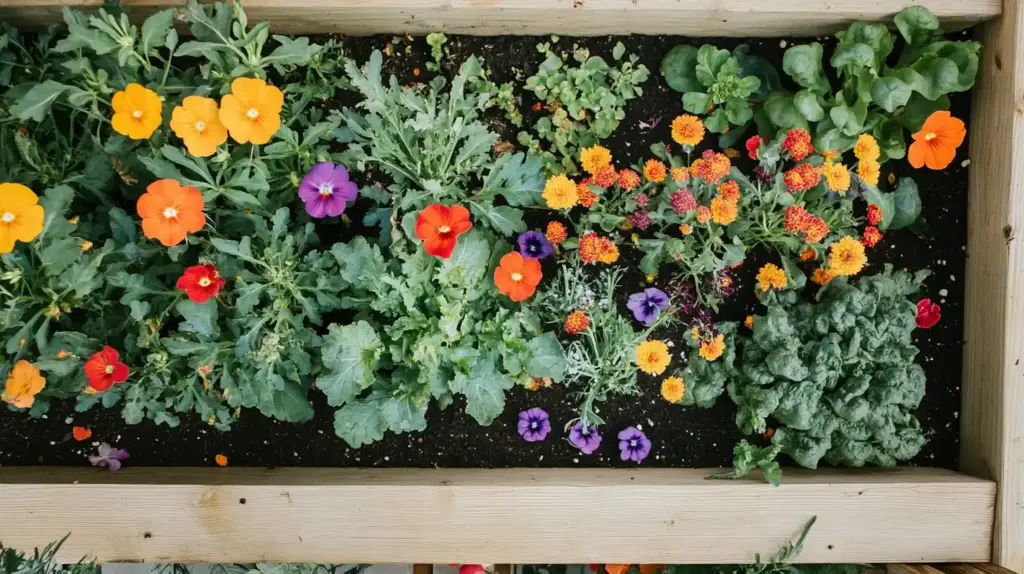
Companion planting is one of the most time-tested vegetable garden ideas that can dramatically improve your garden’s health and productivity. By pairing plants that naturally support one another, you can reduce pests, enhance flavor, and make better use of limited space. For example, basil planted alongside tomatoes can help repel harmful insects, while marigolds add color and deter nematodes.
Mixing edible plants with flowers not only boosts your yield but also creates a garden that’s both beautiful and functional. It’s a smart approach for small gardens where every inch counts.
Companion planting benefits:
- Natural pest control without chemicals
- Enhanced growth through symbiotic relationships
- Greater plant diversity and visual interest
2. Vertical Gardening Solutions
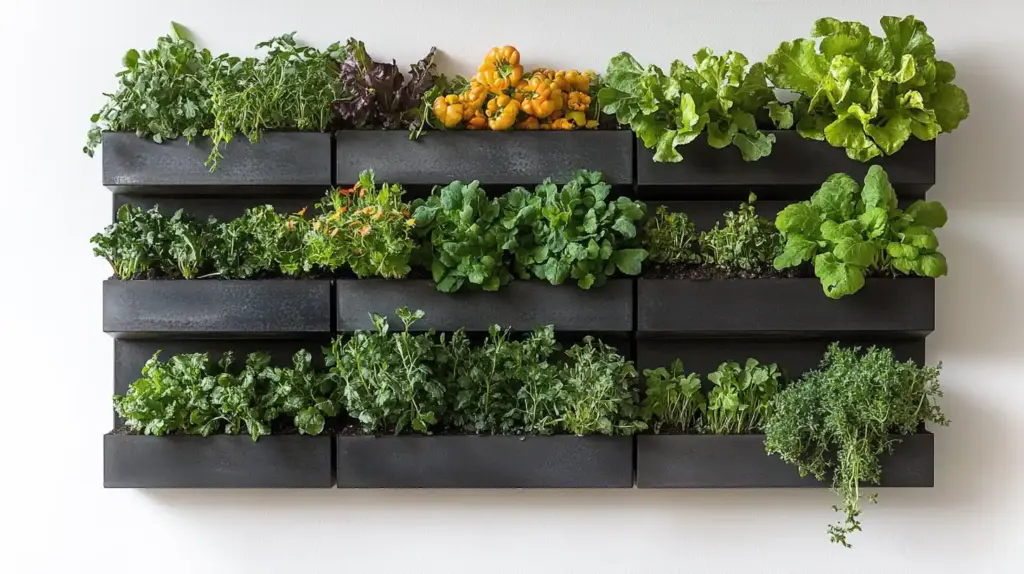
If you’re short on ground space, vertical gardening is one of the smartest vegetable garden ideas to explore. By growing upward instead of outward, you can transform walls, fences, and railings into productive growing zones. Vertical systems work especially well for herbs, lettuces, peas, and even compact tomatoes.
Consider using hanging baskets, trellises, stacked planters, or wall-mounted containers. These options not only save space but also improve air circulation and sun exposure, leading to healthier plants. Plus, vertical gardens are visually striking, making them perfect for patios and balconies.
Creative vertical options include:
- Repurposed pallets as vertical planters
- Tiered shelves or ladder gardens
- Hanging grow bags for strawberries or herbs
This space-efficient method is ideal for urban gardeners seeking fresh produce in compact settings.
3. Raised Bed Garden Layout
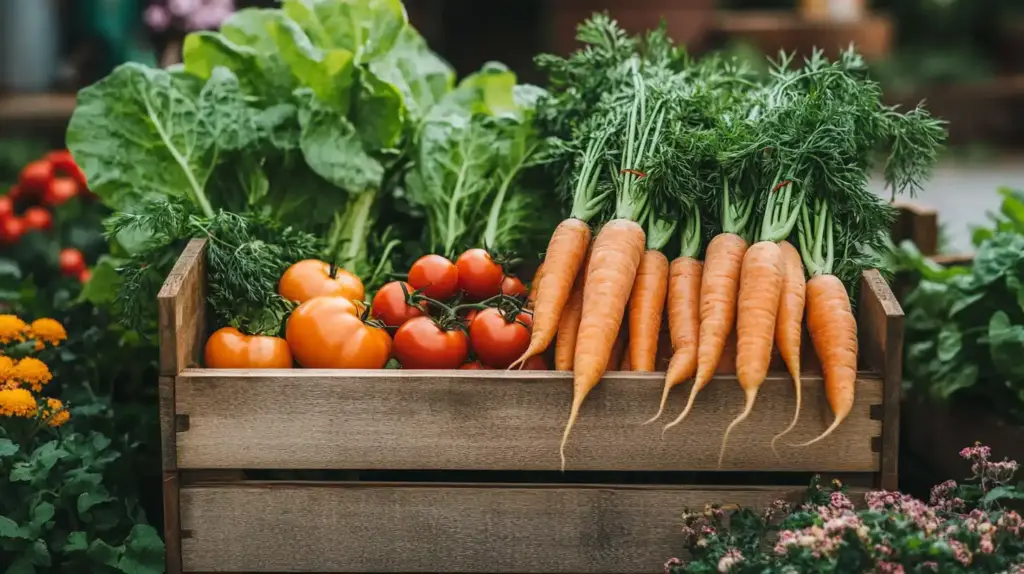
Among the most practical and aesthetically pleasing vegetable garden ideas is the use of raised beds. These structured garden boxes make it easier to organize your crops, control soil quality, and reduce issues like compaction or poor drainage. For small gardens, raised beds allow you to grow intensively, maximizing every square foot.
Choose untreated wood, stone, or recycled materials to build your beds. Keep the width manageable—typically under four feet—so you can reach the center without stepping in the soil. This layout also enhances accessibility for those with mobility concerns.
Why raised beds work well in small gardens:
- Better soil control and drainage
- Easier weed and pest management
- Visually tidy and customizable design
Raised beds are an excellent solution for gardeners seeking both structure and productivity in tight spaces.
4. Herb Spiral Garden Design
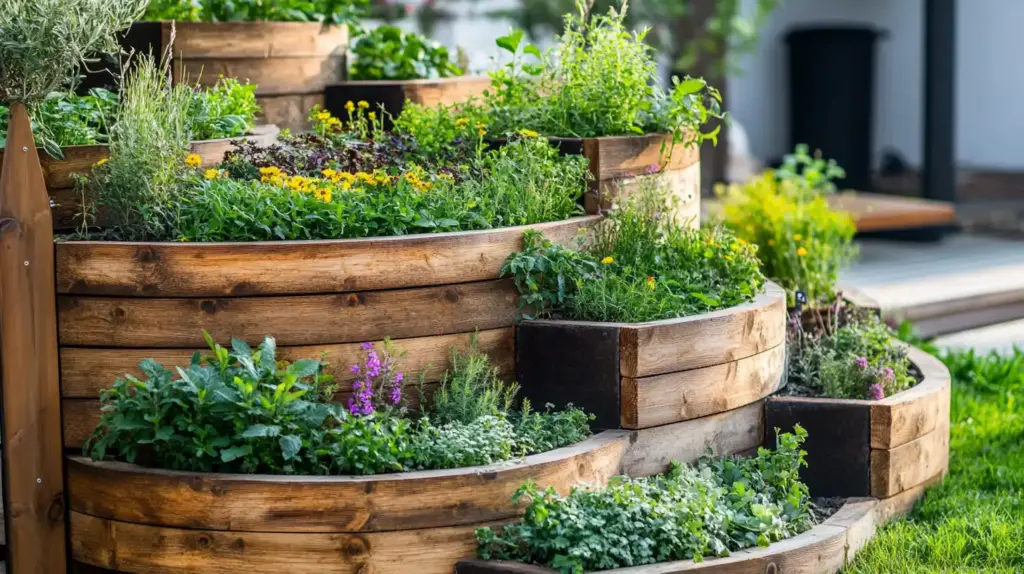
A herb spiral is a stunning and space-savvy feature that blends form and function—making it one of the most artistic vegetable garden ideas for compact spaces. This spiral-shaped, raised structure allows you to grow a variety of herbs in one compact area, each placed according to its sun and moisture preferences.
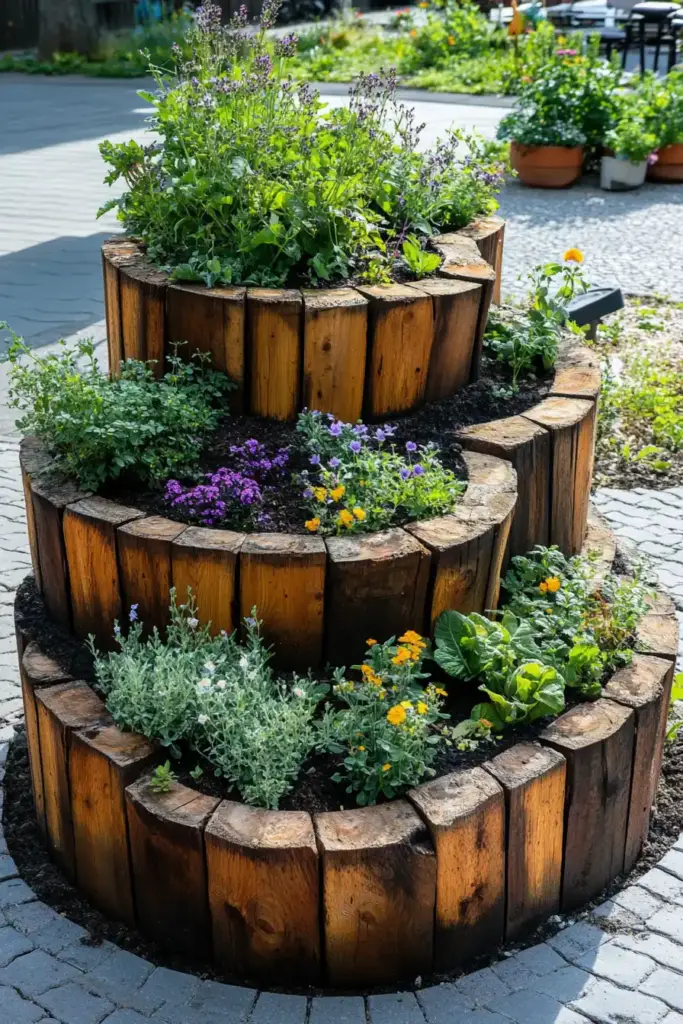
The base of the spiral stays moist and cool—ideal for parsley and mint—while the top remains dry and sunny, perfect for rosemary or thyme. You’ll not only maximize vertical space but also create microclimates that support different plant needs.
Benefits of a herb spiral:
- Increases planting area without needing more ground
- Creates an eye-catching garden centerpiece
- Encourages permaculture principles
It’s a beautiful way to infuse flavor and fragrance into your small garden while saving valuable space.
5. Edible Landscaping Ideas
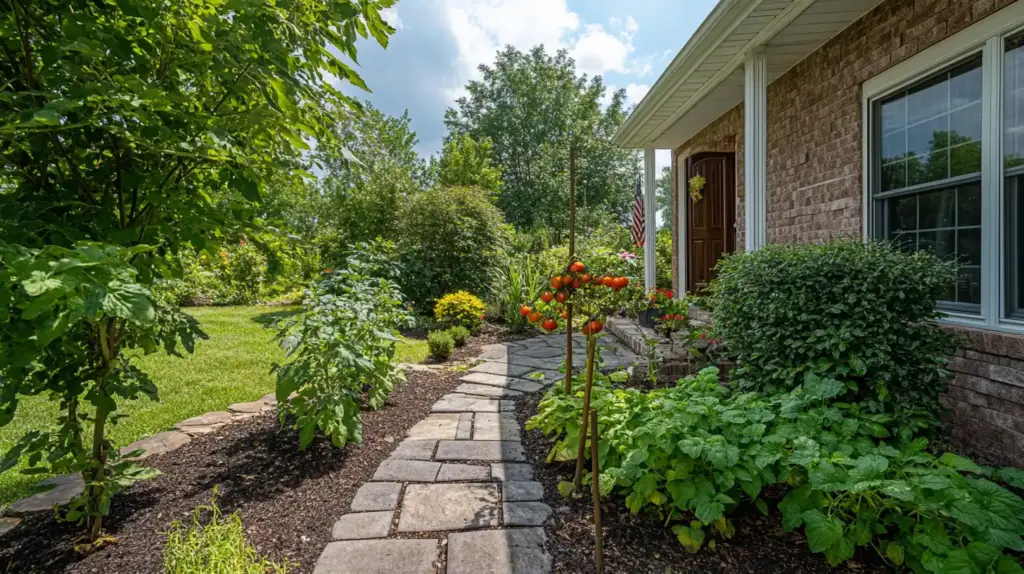
Edible landscaping is one of the most visually striking and practical vegetable garden ideas for small yards. Instead of separating ornamental and edible plants, this approach integrates vegetables and herbs directly into your landscape design—creating a garden that’s both productive and picturesque.
Imagine bright cherry tomatoes climbing a decorative trellis, or curly kale lining your flower beds like living sculptures. You can even swap traditional shrubs for bushy rosemary or colorful Swiss chard. This method not only saves space but also attracts beneficial insects and supports biodiversity.
Ideas to try in edible landscaping:
- Use leafy greens as borders around walkways
- Interplant flowers like nasturtiums with peppers and beans
- Grow climbers like cucumbers on decorative arches
With a little planning, your garden can nourish your body and please your eyes—all from the same plot.
6. Container Gardening for Urban Spaces
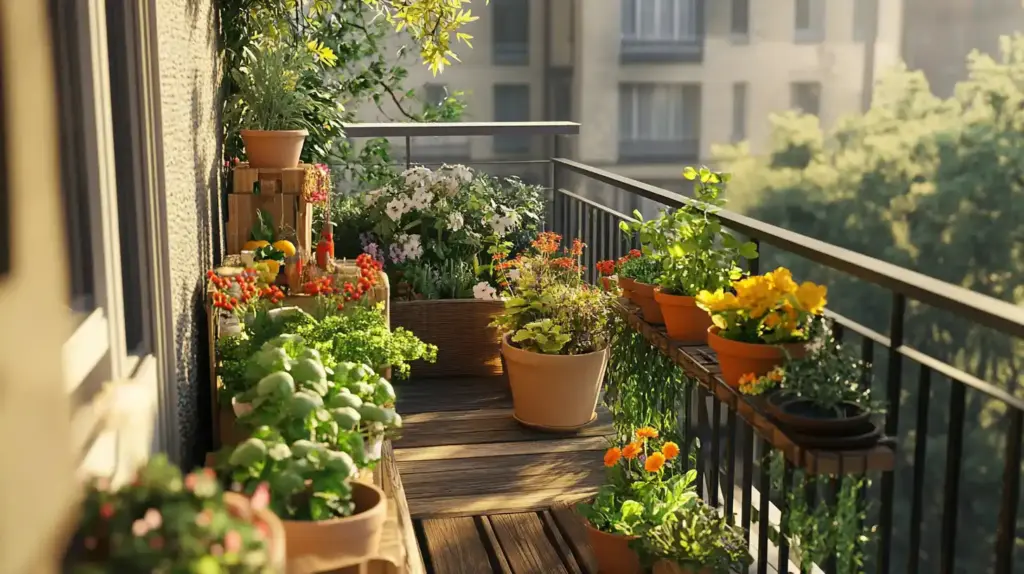
Container gardening is one of the most flexible and accessible vegetable garden ideas, especially for urban settings like balconies, patios, or rooftops. With the right pots and planters, you can grow everything from herbs to tomatoes—no backyard required.
Choose containers with good drainage, and match the pot size to the plant’s root depth. Tomatoes, peppers, and carrots thrive in deeper containers, while herbs and lettuce need only a few inches of soil. You can even mix edibles with flowering plants for a lush, decorative look.
Advantages of container gardening:
- Easy to move and rearrange for optimal sun
- Allows soil customization for each plant
- Reduces weed pressure and some pest risks
Whether you’re gardening in a tight space or just getting started, containers offer freedom, style, and fresh harvests right outside your door.
7. Colorful Vegetable Borders
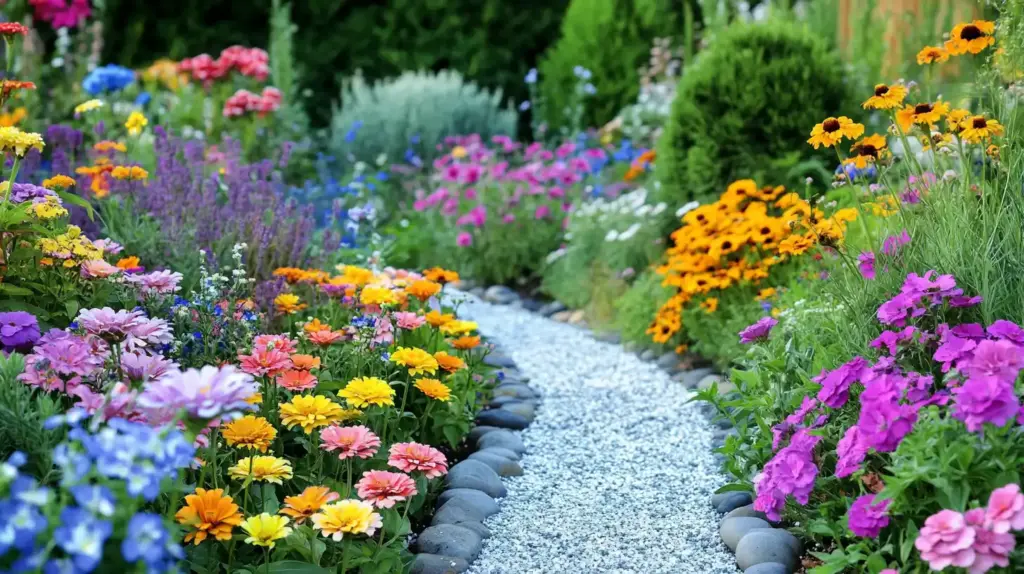
Colorful borders aren’t just for flowers—when done right, they can be one of the most charming and effective vegetable garden ideas for adding flair to your growing space. By planting brightly colored veggies and companion flowers around the edges of your beds, you enhance both visual appeal and ecological function.
Think rainbow chard, purple cabbage, and orange marigolds lining your pathways or framing raised beds. These borders attract pollinators, deter pests, and define spaces with artistic flair.
Colorful border tips:
- Alternate flowering plants with edible crops for contrast
- Use color to guide the eye through the garden
- Choose pollinator-friendly flowers like calendula or alyssum
Not only will your garden look more alive, but you’ll also boost its health and productivity through smart, aesthetic planting.
8. Garden Pathways for Accessibility
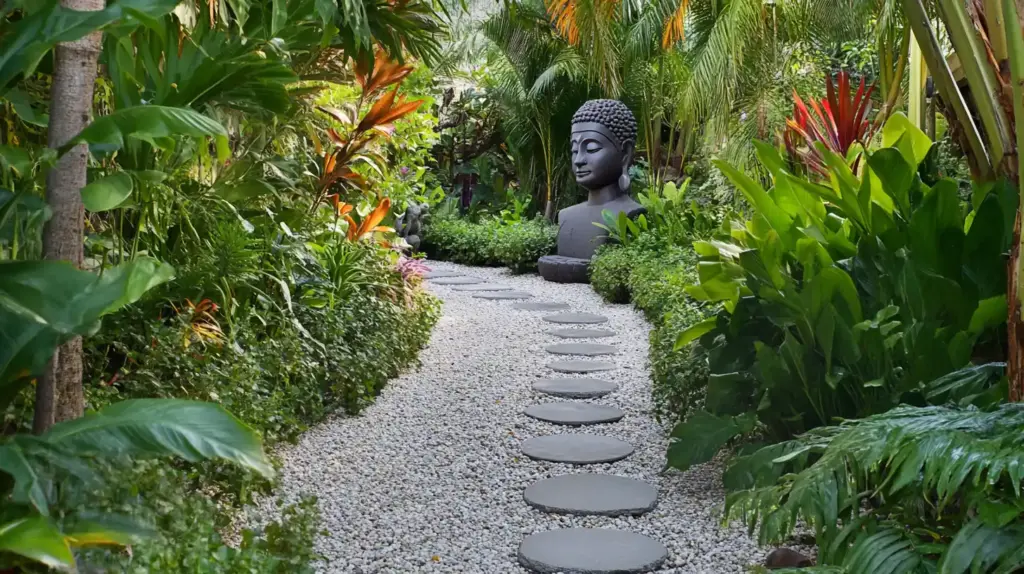
When planning efficient and inclusive vegetable garden ideas, don’t overlook the importance of well-designed pathways. Thoughtful paths make every part of your garden easier to reach, especially in small spaces where maneuverability matters.
Use materials like gravel, wood chips, or pavers to create smooth, stable walkways. These not only reduce soil compaction around plant roots but also ensure better accessibility for gardeners of all ages and abilities. Pathways also help define zones, making your garden more organized and easier to maintain.
Smart pathway planning includes:
- Keeping paths wide enough for easy movement
- Choosing slip-resistant materials for safety
- Using borders or edging to separate beds cleanly
Accessible paths not only enhance usability—they add structure and charm to your compact vegetable garden.
9. Shade Gardening for Cool Vegetables
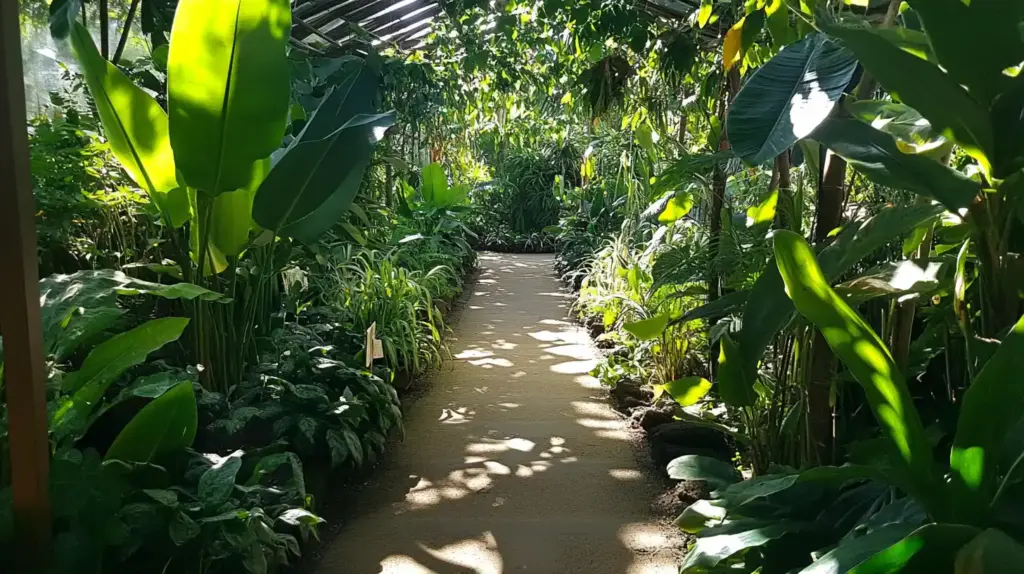
Not all crops crave full sun—some of the best vegetable garden ideas involve making use of shady spots. Shade gardening allows you to grow cool-season vegetables like spinach, lettuce, arugula, and kale in areas that receive filtered light or partial sun.
These leafy greens thrive in cooler conditions and are less likely to bolt in summer heat. If your garden sits beneath trees or is bordered by buildings, take advantage of the dappled light to create a lush, productive nook. You can also use shade cloth or trellises to protect sensitive crops.
Tips for successful shade gardening:
- Focus on leafy greens and root crops
- Observe sunlight patterns throughout the day
- Avoid overwatering, as shaded areas retain moisture longer
By utilizing shaded areas wisely, you open up more growing space and extend your harvesting season.
10. Succession Planting Strategies
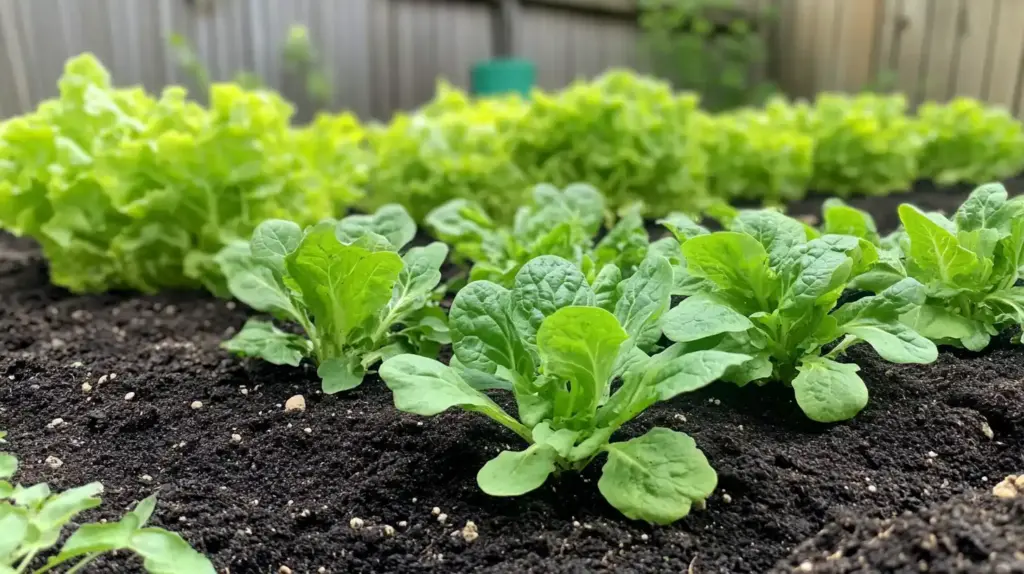
Succession planting is one of the most efficient vegetable garden ideas for continuous harvests, especially in small spaces. Instead of planting everything at once, this method staggers crops over time to ensure that your garden remains active and fruitful throughout the growing season.
For example, after harvesting early crops like radishes or lettuce, you can replant the same bed with beans or carrots. By planning in intervals, you reduce gaps in production, prevent pest buildup, and make better use of your space.
Key succession planting techniques:
- Start new seeds every 2–3 weeks for crops like greens
- Replace harvested plants promptly with new varieties
- Use quick-growing crops between slower ones
This strategy keeps your garden looking full and vibrant while ensuring you get the most out of your space.
FAQs About Small Vegetable Garden Ideas
1. What are the best vegetables to grow in small gardens?
Great options include lettuce, radishes, spinach, bush beans, cherry tomatoes, herbs, and peppers. These crops are compact, quick-growing, and ideal for tight spaces.
2. How can I make my small vegetable garden more productive?
Use space-saving vegetable garden ideas like vertical gardening, raised beds, and succession planting. Also, improve soil quality and water consistently to boost yield.
3. Can I grow vegetables indoors or on a balcony?
Yes! Container gardening makes it easy to grow vegetables on balconies, patios, and even windowsills. Choose compact varieties and ensure they get enough sunlight.
4. What vegetables grow well in partial shade?
Leafy greens like kale, lettuce, arugula, and Swiss chard thrive in partial shade. Root crops like beets and carrots also tolerate less sun if grown in cooler temps.
5. How do I start a vegetable garden with limited experience?
Begin with easy-to-grow crops in containers or raised beds. Follow simple vegetable garden ideas like companion planting and use online guides for step-by-step help.
Conclusion
Creating a thriving edible garden doesn’t require acres of space—just smart planning and creative solutions. With these ten clever vegetable garden ideas, you can transform any small area into a productive and beautiful oasis. Whether you’re experimenting with vertical gardening, adding colorful borders, or practicing succession planting, each tip brings you closer to a garden that nourishes both body and soul.
By embracing thoughtful design and natural strategies, even the tiniest plots can yield abundant harvests and year-round joy.

